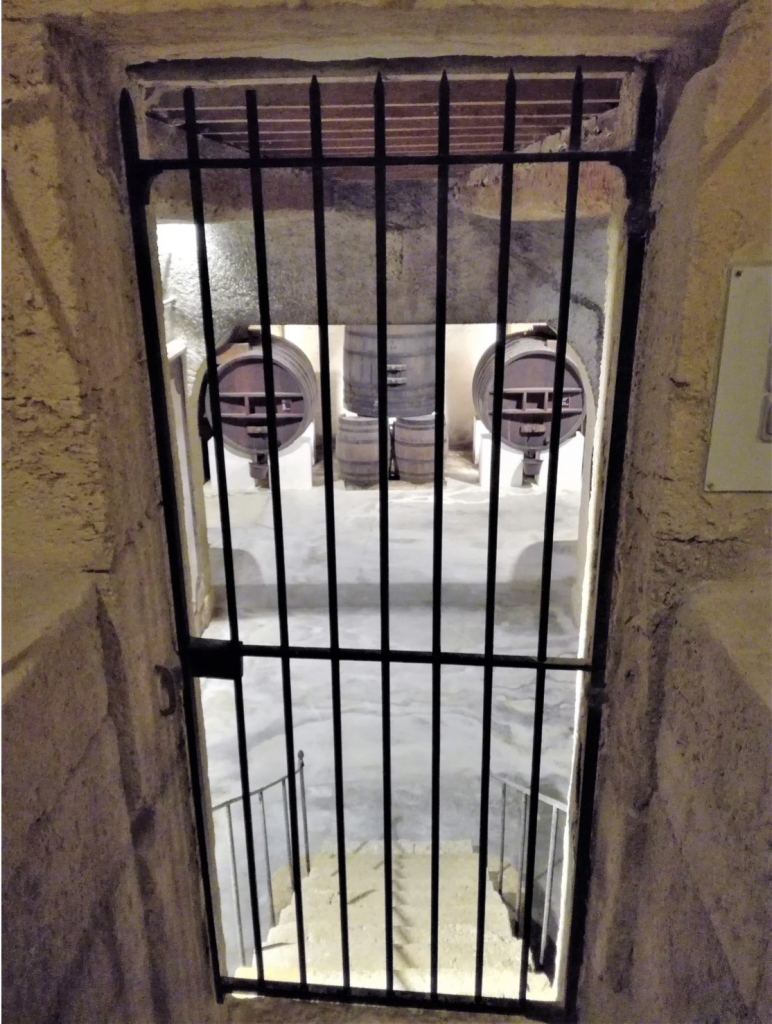
OUR CELLAR AND ITS SECRETS …
We explained it to you in a previous post, but there are several ways to age a wine, and I invite you to read our article on the ageing of our wines to better understand the explanations that follow.
At Domaine de Soustres, the wine process and ageing encourage the expression of fresh fruit aromas from our terroir and a delicate tannic structure. In order for this signature to be expressed in our different cuvees, we use different vats at different stages of the development of our wines.
OUR BARRELS
The “Foudre”(french term) is in fact a huge wooden barrel. The cellar of the estate has different sizes (the largest can contain 18,000 litres, the smallest 2,500 litres), some of which are over a century old! The most recent wooden vats, assembled in the cellar in 2020, are truncated cone-shaped and allow not only maturing and storage, but also vinification.
Unlike casks, tuns offer a small surface area of wood in contact per litre of wine and are therefore not intended for intense woody maturation. At the estate, they are used for maturing red wines. Indeed, the porosity of the wood (which varies according to the type of wood, its age and origin) allows what is called “micro-oxygenation” of the wine. This small but regular supply of air has a particular influence on the tannins, which become rounder (less dry) with time.
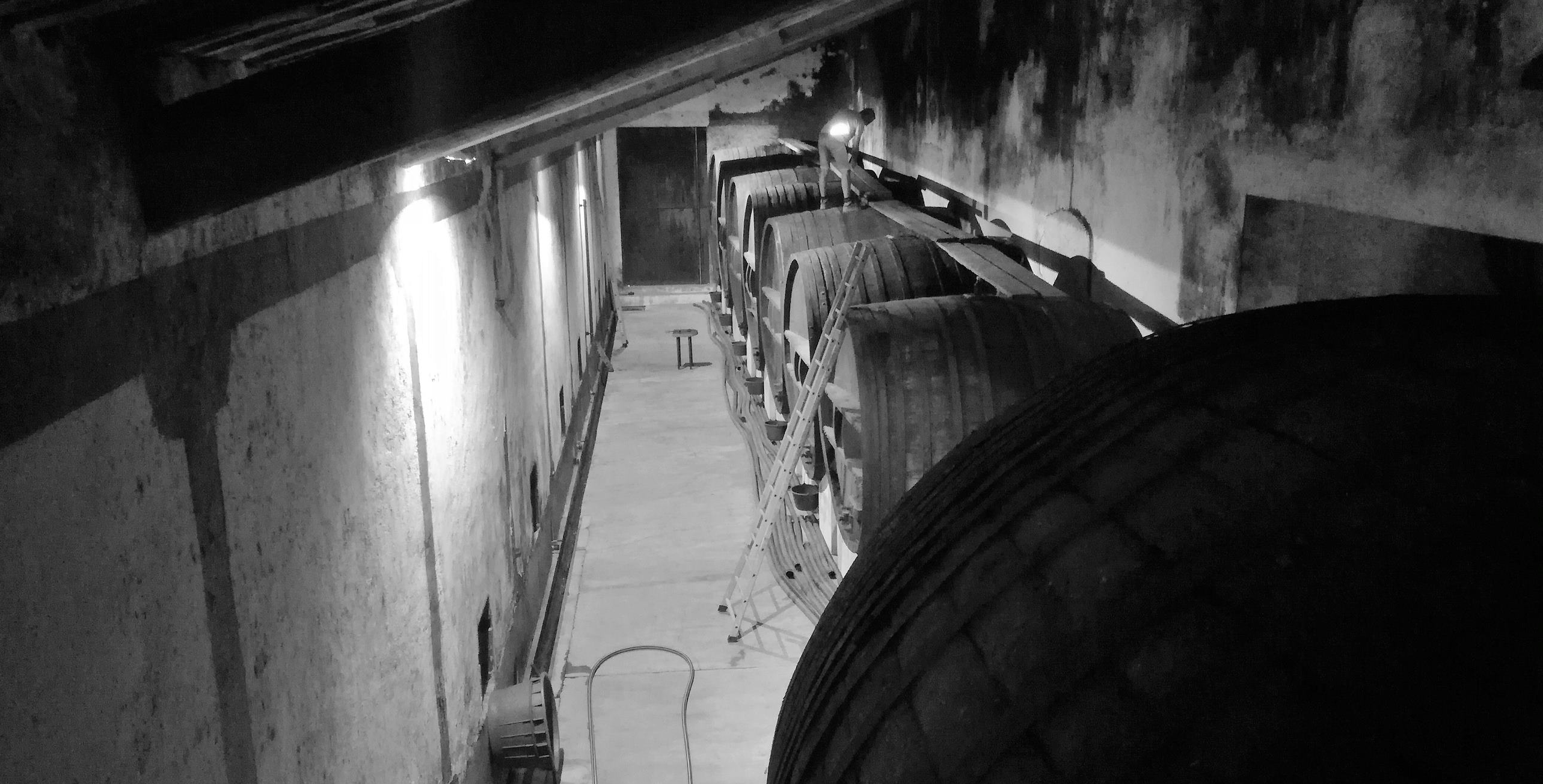
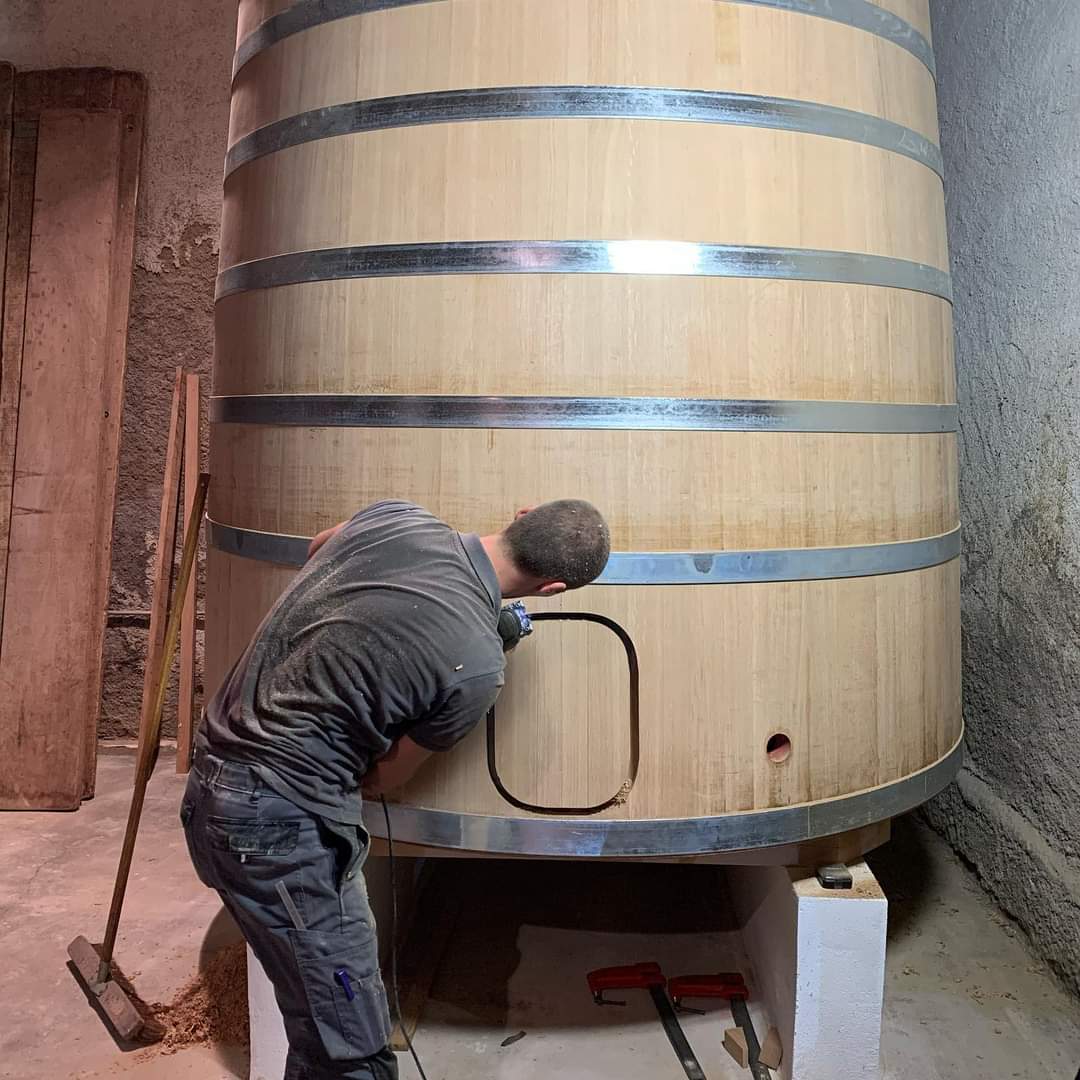
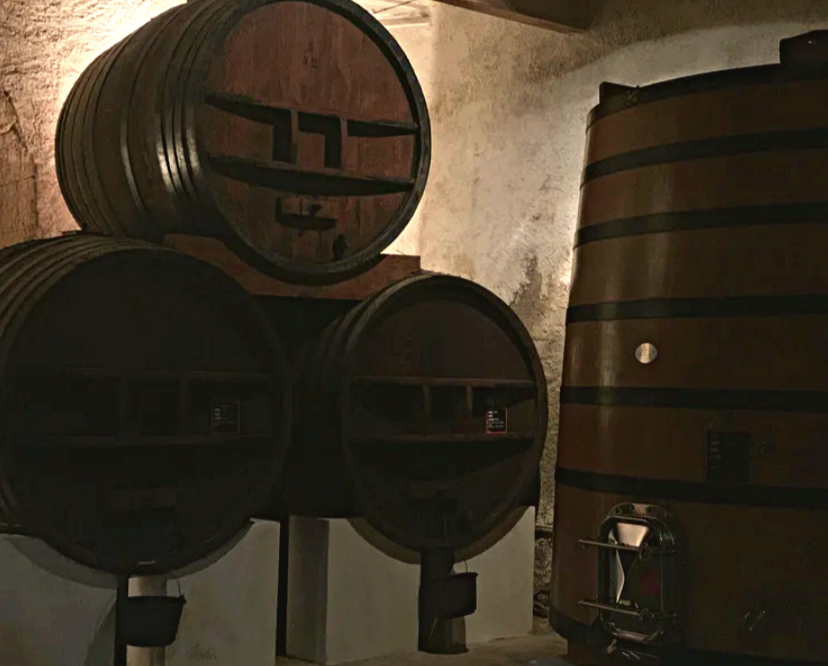
Only a few of us still work with these wooden giants and they are gradually being replaced. Fortunately, Franck, our manager, looks after them and knows exactly how to maintain them. Perhaps you will meet him on a future visit and he will show you how.
Our Stainless steel tank
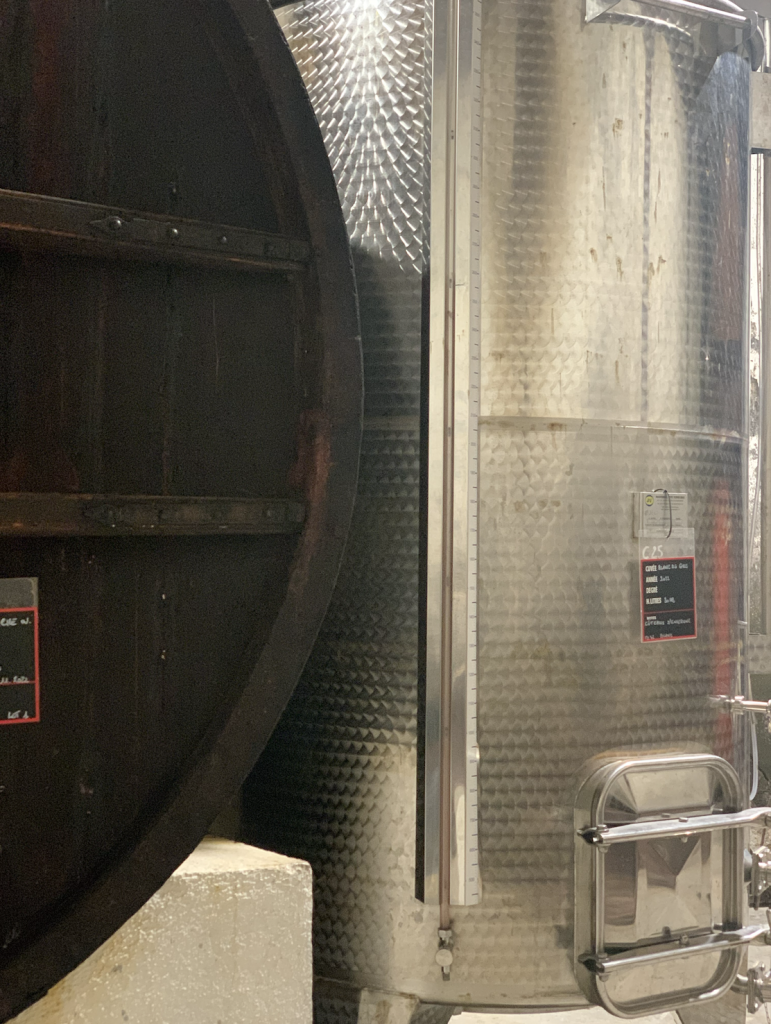
The stainless steel tank has experienced a major boom in recent years. Its first advantage is the relative lightness of the material, which makes it easier to place and transport within the cellar, to improve hygiene (stainless steel is not porous and is therefore easier to maintain) and the very low permeability of the containers, which limits oxidation. As long as these tanks are equipped with floating caps (watertight lids that can be lowered according to the volume stored) and are temperature-controlled, they will be the allies of fresh and fruity wines, from fermentation to storage.
They are mostly cylindrical, easy to clean, to move, to transport, with integrated temperature control for the latest models, with or without a trap door for decanting – in short, they make Franck’s work much easier! They can be adapted to different volumes of wine (very practical for parcel-based vinification) and are neutral in terms of taste compared to the wine.
A big disadvantage is the low inertia of the material, which requires the temperature of the tank and/or its environment to be well regulated and which generates fluid movements inside the tank, resuspending particles and lees before racking, thus delaying the clarification of the wines.
OUR STONE AND CONCRETE TANKS
The Domaine de Soustres still has 2 stone vats dating from the creation of the estate’s cellar in the 19th century. These two vats, each with a capacity of almost 50,000 litres, have been entirely covered with stainless steel plates and are only used for fermentation, as their volume is too large for current storage and maturation. However, given the thickness of their walls and their semi-buried position, they have good thermal inertia. This is why two other identical vats have been converted into a storage area for bottled wine!
Twenty years ago, those who had concrete vats destroyed them or abandoned them to replace them with stainless steel vats, and today it is the opposite. Concrete is once again being used by many winegrowers, but in very different shapes and sizes of vats (eggs tank for example).
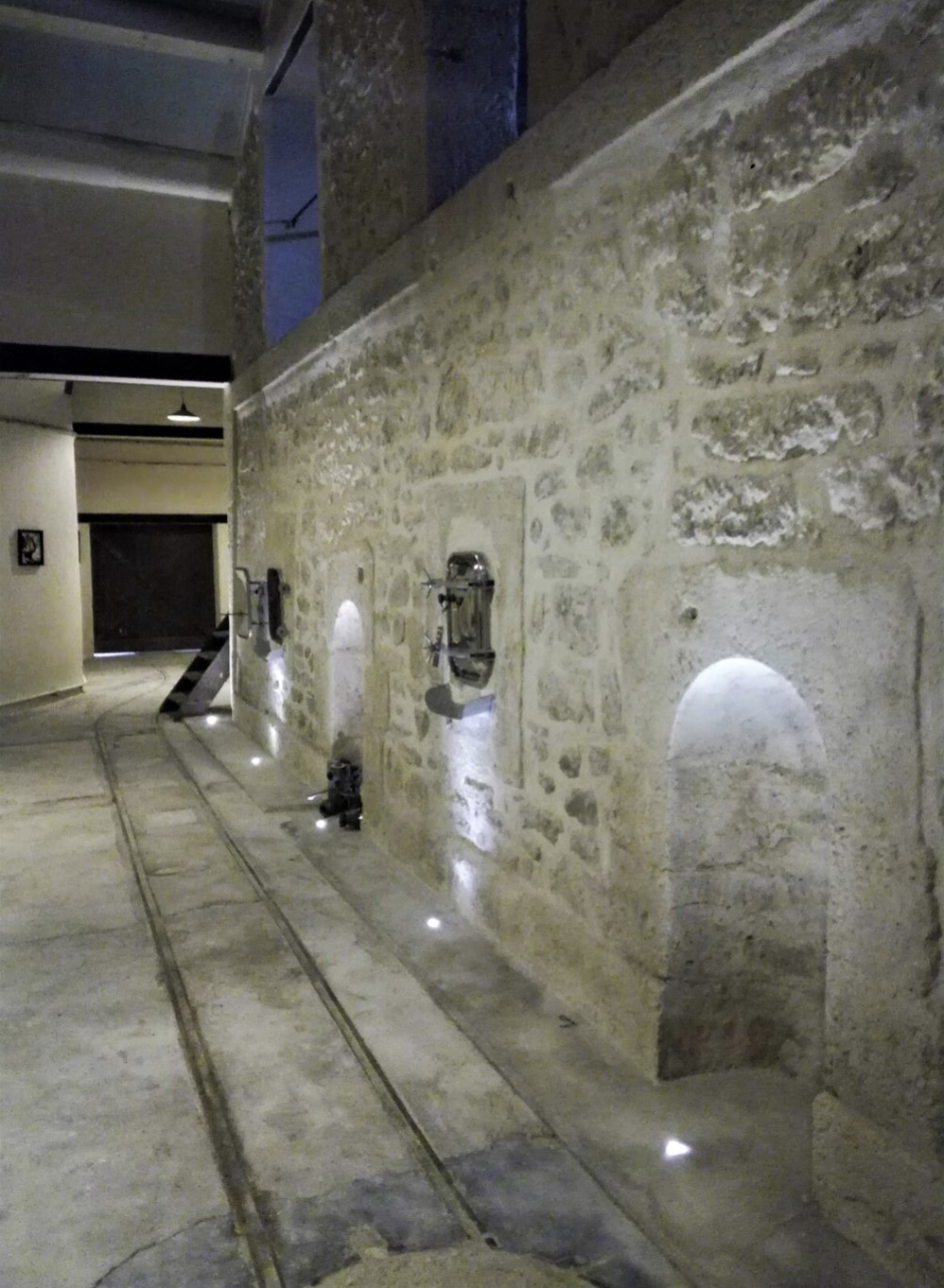
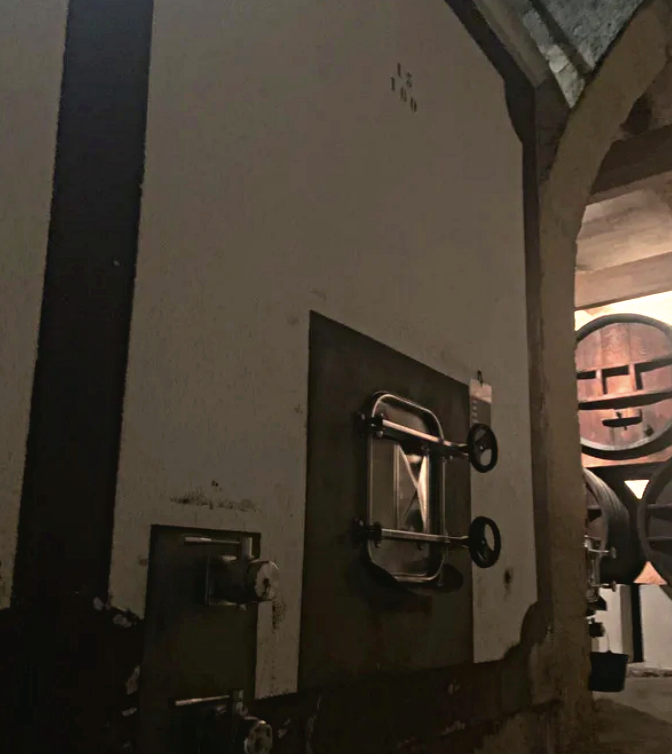
Ours are old, which explains their cubic shape. They are semi-buried and integrated into the cellar walls, so they can’t be disassembled or transported. Despite their slightly dated appearance, these tanks have many advantages. Starting with the great inertia of the concrete that they are made of, in other words the ability to absorb temperature variations over time. This means that our vats keep the wine at a constant temperature for a long time. In addition, they can be used as vinification tanks and storage tanks. Some of our concrete vats were renovated in 2021 to enable them to continue working for several more years and to benefit from their qualities for a long time to come.
Now that you know everything about how we do things, we are hoping to see you soon…
Domaine de Soustres’ team
HORAIRES DU CAVEAU MAI & JUIN 2025
du 26 mai au 1 juin - Ouvert du mardi au dimanche - de 10h00 à 13h00 et de 15h00 à 19h00 - ouvert le jeudi 29 mai (ascension)
du 2 juin au 8 juin - Ouvert du lundi au vendredi et dimanche - de 10h00 à 13h00 et de 15h00 à 19h00 - Fermé samedi 7 juin.
du 9 juin au 15 juin - Ouvert du lundi au samedi - de 10h00 à 13h00 et de 15h00 à 19h00 - Ouvert lundi 9 juin (Pentecôte)
du 16 juin au 22 juin - Ouvert du lundi au mercredi - de 10h00 à 13h00 et de 15h00 à 19h00 - Fermé du jeudi au dimanche
du 23 juin au 29 juin - Ouvert du lundi au samedi - de 10h00 à 13h00 et de 15h00 à 19h00


